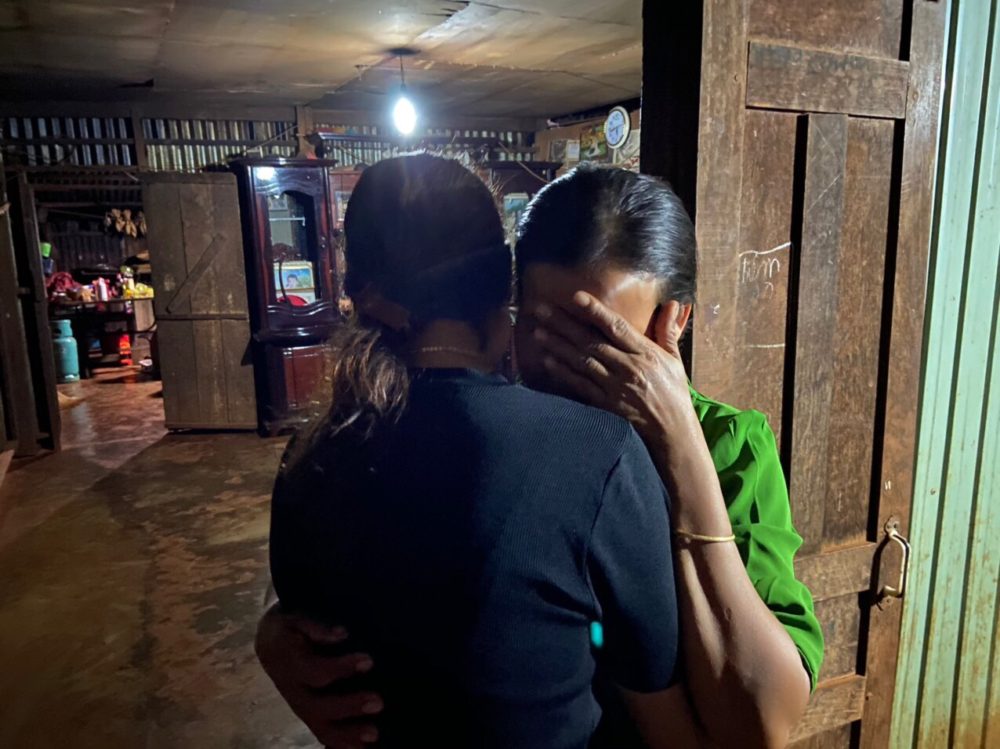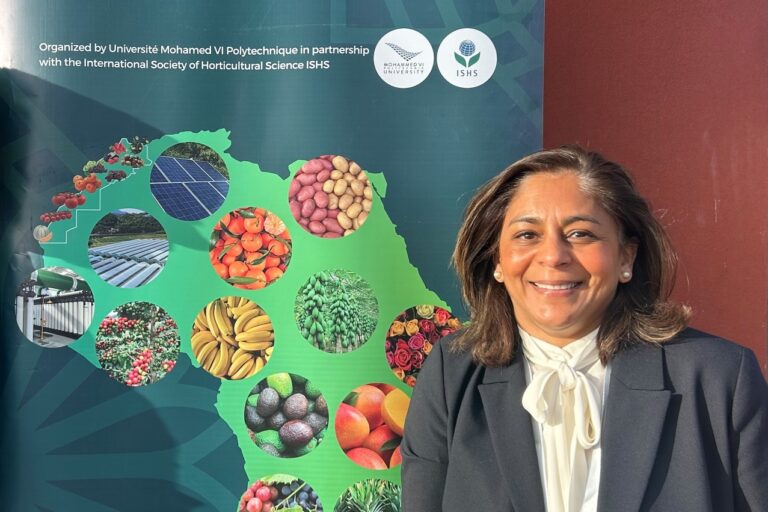 The writer won the 2020 NSW Premier’s Multicultural Communications Best Print Report Award for this story
The writer won the 2020 NSW Premier’s Multicultural Communications Best Print Report Award for this story
The writer’s interview on SBS Radio Hindi Service
By Neena Bhandari
Sydney, 18 May 2020 (IPS): A single mother, Mai (name changed) had the responsibility of providing for her young son and grandparents, who had brought her up in a poor rural province in southern Vietnam’s Mekong Delta. While she was looking for employment, somebody approached her on social media with an offer of a high-paying job in China. When she arrived in China, she was sold to a man for ‘marriage’.
For two months, Mai suffered violence and beatings from her `husband’, who kept her locked in the house. When she tried to fight back, the ‘husband’ sold her to another man seeking a wife. She was forced to have sex as the family wanted a child. When she became pregnant, she was given some freedom and allowed to work in a nearby shoe factory. Desperate to escape this forced marriage and slavery, she managed to connect online with a Vietnamese man, who referred her to Blue Dragon Children’s Foundation, an Australian charity working in Vietnam.
A forced marriage is when a person is married without freely and fully consenting because of either coercion, threat or deception. The Asia and Pacific region predominates in the numbers of victims of modern slavery. The region had 55 per cent of the victims of forced marriage worldwide. Sexual exploitation was also rife in the region with more than seven in 10 victims worldwide, According to the 2017 Global Estimates of Modern Slavery.
Mai is amongst a small number of fortunate women, who were able to seek help and be rescued. She returned to Vietnam in December 2018, and after the police were able to arrest her trafficker, she was reunited with her family.
“I have been able to rebuild my life with Blue Dragon’s support. Recently, I have completed hospitality training and have a part-time job in a city café. I can save some money to send to my grandparents, who are nurturing my children,” Mai told IPS through a social worker.
Her experience resonates with many young Vietnamese women, who are tricked and trafficked into sexual slavery. Blue Dragon Children’s Foundation rescues 110 to 130 women each year. Its co-CEO Skye Maconachie told IPS, “Once rescued and returned to Vietnam, their family situation usually hasn’t changed and they are still impoverished and vulnerable to being re-trafficked or exploited. Our teams provide emotional, psychological, basic living and legal support as they work with each survivor to help them learn skills and get employment”.
While survivors seek normalcy on first returning home, Maconachie said, “It is not until later in their recovery that the trauma they have experienced emerges and impacts them with flashbacks, Post-Traumatic Stress Disorder, low self-esteem, fear and distrust”.
Women and girls are disproportionately affected by modern slavery, accounting almost 29 million or 71 per cent of the overall total. On any given day in 2016, an estimated 15 million people were living in a forced marriage. More than one third of all victims of forced marriage were children at the time of the marriage, and almost all child victims were girls, according to joint research by the International Labour Organization, and the Walk Free Foundation, in partnership with the International Organisation for Migration.
Walk Free’s Senior Research Analyst, Elise Gordon told IPS, “Our research has indicated that traditional views of the role of women, girls and children could be contributing to increased vulnerability to forced and underage marriage, forced sexual exploitation, and commercial sexual exploitation of children in the Asia Pacific region.”
Trafficking contravenes fundamental human rights and freedoms. As Australian Red Cross’ National Coordinator for Trafficked People Program, Sally Chapman told IPS, “We are concerned that people who have been trafficked may be subject to various forms of physical, sexual and emotional violence. They are often afraid of arrest, detention and deportation; don’t trust authorities, and can also be discriminated against throughout any referral and support processes. The impact can be significant and include permanent control and/or monitoring of their movement, fear of physical retaliation, death, or reprisal against or harm to their loved ones”.
The Australian Red Cross last year provided assistance with essential items, such as food, toiletries and clothes while addressing accommodation, health and wellbeing needs to individuals identifying as being from 48 different countries.
Chapman cautioned, “During disasters and crises, people can be displaced from their homes, separated from their family members, school and employment can be interrupted, and systems of social support and law and order can break down. These factors can exacerbate the risk of trafficking, particularly for women and girls. The humanitarian impact of climate change and extreme weather events is likely to increase trafficking and forms of exploitation and slavery.”
The Australian Red Cross works to raise awareness in communities so that the general public, service providers and authorities can reduce risks; recognise the signs of exploitation, trafficking, slavery; be able to respond safely; and refer someone for help and support.
The hidden nature of exploitation makes it difficult to ascertain the extent of victimisation in Australia, which is primarily a destination country for people trafficked from Asia, particularly Thailand, Korea, the Philippines, Malaysia and Pacific Island countries.
Recent research by the Australian Institute of Criminology (2019) estimated that only one in four victims are detected. This means that human trafficking and slavery victims in Australia ranged between 1,300 and 1,900 in 2015–2017.
Modern Slavery trends vary widely across the Asia Pacific region and men, women and children are exploited for various reasons – slavery, human trafficking, slavery-like practices such as servitude, forced labour, debt bondage, forced marriage or organ harvesting.
As Jenny Stanger, Executive Manager of the Catholic Archdiocese of Sydney’s Anti-Slavery Taskforce told IPS, “Awareness about trafficking and slavery outside the sex industry has grown only in the last decade. Human trafficking for organ removal poses new challenges. There is a global shortage of organs and there are a lot of vulnerable people who might be willing to sell their organs. There is also mounting evidence that prisoners in China are forcibly having their organs harvested for profit”.
Global Financial Integrity estimates that 10 percent of all organ transplants including lungs, heart and liver, are done via trafficked organs. The most prominent organ traded illicitly is the kidney. The World Health Organization estimated that 10,000 kidneys are traded on the black market worldwide annually, or more than one every hour.
Stanger, who has worked as a case manager and advocate for survivors of trafficking and slavery for over two decades, relates the story of a Filipino woman, who was approached by an Australian couple visiting the Philippines. They were looking for a kidney donor and they offered this woman money and permanent residency in Australia if she were to donate a kidney to their dying family member. The woman was advised by her own community that this was a good opportunity for her so she agreed. After arriving in Australia, she was treated poorly and forced to clean and cook for the dying recipient and her husband. By chance the woman disclosed the complete nature of the arrangement to a health worker in the hospital where the transplant was to take place and that person contacted Stanger for assistance. The kidney transplant did not take place and the recipient eventually died.
“In the end, the government response to human trafficking recognised the Filipino woman as a human trafficking victim. She was able to stay in Australia after she chose to cooperate with the Australian Federal Police in an investigation that was unable to be prosecuted. This failure changed Australian law forever because, at the time, the Commonwealth Criminal Code did have an offence to adequately address organ trafficking. A new “organ trafficking” offence was enacted in 2013”, Stanger explained.
It is estimated that the illegal organ trade conservatively generates approximately US$840 million to US$1.7 billion annually, according to GFI.
In 2015, Australia legislated to make clear that that slavery offences have universal jurisdiction; it amended the Criminal Code to increase the penalties for forced marriage from four years to seven years’ imprisonment for a base offence, and from seven to nine years’ imprisonment for an aggravated offence.
The ASEAN-Australia Counter-Trafficking Initiative, launched in August 2019 to fight human trafficking, modern slavery and forced labour, is a 10-year program that will work to strengthen criminal justice responses and protect victim rights in the region.
“COVID 19 has demonstrated that when the whole world decides to take action to address a critical issue, change is possible. I hope that one day our leaders will truly recognise the tragedy of modern slavery and find the political will to make freedom from modern slavery a reality for everyone ”, Stanger added.
© Copyright Neena Bhandari. All rights reserved. Republication, copying or using information from neenabhandari.com content is expressly prohibited without the permission of the writer and the media outlet syndicating or publishing the article.




I have just read four of your most recent articles. Cogent with solid supporting stories are your hallmark.